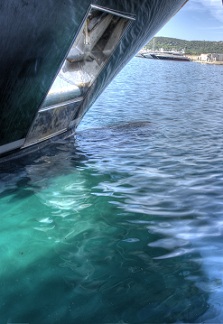Land ahoy for cleaner, greener ship engines

Related topics
Innovation Transport Smart, green and integrated transport Austria Czechia Denmark Finland France Germany Greece Sweden United Kingdom Switzerlanddate: 17/01/2014
Project: Higher efficiency, reduced emissions, in...
acronym: HERCULES-C
See also: Info-centre
Contact: http://www.hercules-c.com
Greater engine efficiency and longer lifetime are the holy grail for ship engine manufacturers – they have been since the beginning of time, and are now linked with the current drive to lower greenhouse gas emissions, says Professor Nikolaos Kyrtatos of the National Technical University of Athens.
He has the challenging task of coordinating the EU-funded project HERCULES-C (‘Higher efficiency, reduced emissions, increased reliability and lifetime engines for ships’). This is the third in a series of three projects that have brought together the biggest names in ship engine manufacturing.
Between them, MAN Diesel & Turbo and Wärtsilä hold 90% of the world’s marine engine market. An agreement to work together was a key driver behind the first HERCULES project.
They signed up to the initiative realising that working together was the only way to strengthen Europe’s innovation and manufacturing capacity and fend off competition from the Far East. In this sector, Europe’s lead time in technology over the Far East had shrunk to less than 10 years and both companies were keen to avoid a further reduction.
Closing in on efficient engines
The HERCULES-A team looked into many different technologies. Over time, the options were reduced. Some proved to be dead-ends, while others were simply too expensive, Kyrtatos explains.
Today’s shortlist is still very diverse, ranging from direct gas injection technologies to exhaust gas recirculation, novel injection nozzles, fuel spray conditioning, operating behaviour evaluation algorithms and more.
The wide use of electronic controls in engines has probably been the most significant development over the past two decades, allowing improved flexibility in engine operation. But the project coordinator refuses to single out a single technology as the most promising.
“There is no silver bullet or magic solution,” Kyrtatos emphasises. Today’s engines are operating at more extreme parameters than their predecessors. Temperatures and pressures are both higher, and engines need to react faster. These different challenges cannot be solved by one technology alone.
Instead, the success of HERCULES-C will come from integrating the results of these many different lines of research – such as in combustion, emissions reduction and novel materials. Integrating these technologies is one of the key objectives for this phase of HERCULES.
Emissions accomplished
HERCULES-C is already ahead of schedule in terms of consumption and emissions targets. In the previous phases, several goals were attained: oxide (NOx) emissions were cut by 50%, particulate emissions by 40%, and overall engine powerplant efficiency was increased by 60%.
“We surpassed these targets in HERCULES’ second phase – although we shouldn’t say this too loudly or the legislators might move the targets,” Kyrtatos jokes.
Although there is some distance between developing research prototypes and moving to production machinery, some HERCULES components designed to reduce emissions are already on the market and have been incorporated into new ships.
“Ships are expensive units. A new container ship may cost €60 million, while a new large engine can cost €4 million,” says Kyrtatos. “So when manufacturers realise that an improvement is possible, they will quickly incorporate it in their market products.”Kyrtatos counts the team’s advanced experimental facilities among the project’s other successes.
As building and running large engine prototypes are also costly endeavours, these facilities would not have been possible outside such a project. The combination of EU and private sector funding was key here. Between them, the three HERCULES projects had a total budget of €76.4 million, of which €39.4 million was provided by the EU.
While the team has covered a lot of ground, additional research is still needed. For some areas – in particular, more efficient combustion engines – the road ahead is long. But crucially, the project partners now know exactly what needs doing to reach these goals.
While there are no plans for a fourth ‘HERCULES’ project, the research will continue in a similar form when the current project comes to a close at the end of 2014.
The research will remain focused on fuel efficiency, emissions and engine lifetime, but looking into the future, says Kyrtatos. The team is already considering a follow-up stage within Horizon 2020, targeting a futuristic fuel-flexible large marine engine, optimally adaptive to its surrounding operating environment.
